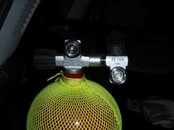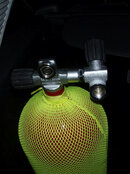broadreach
Contributor
So, after living in Europe (western Switzerland) for about a year, I finally decided to take the plunge and try the local lake diving scene. One thing that caught my attention immediately upon entering the local dive shop, is that 99% of the tanks had 2 (DIN) valves attached to them. Shop owner said that this was required by law in neighboring France (mandatory to dive with 2 first stages).
Sounds like overkill to me, but could there be something in the local environment that creates a need for this? maybe cold water?
any thoughts?
Sounds like overkill to me, but could there be something in the local environment that creates a need for this? maybe cold water?
any thoughts?





